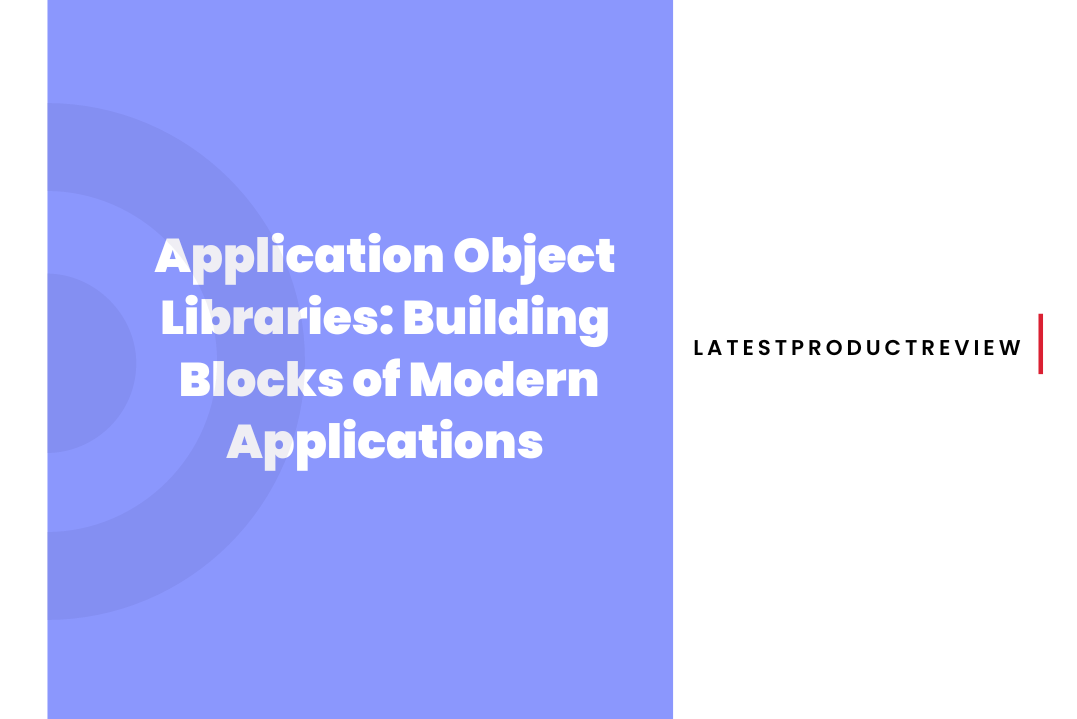In the constantly changing field of software development, the strength and effectiveness of applications depend significantly on the foundational architecture.
An essential element that may go unnoticed by users but profoundly influences the functionality of an application is the Application Object Library (AOL). This article examines the complexities of Application Object Libraries, uncovering their importance and how they affect the development and performance of contemporary applications.
Understanding Application Object Libraries
Definition and Core Elements
An application Object Library (AOL) serves as a reservoir of reusable components and functionalities, streamlining the development process. It comprises a set of pre-constructed objects, methods, and routines that developers can utilize to accelerate the creation of software applications. These libraries encapsulate standard functionalities, fostering code reusability and maintainability.
Types of Objects in Application Object Libraries
Widgets and Controls:
- Widgets encapsulate user interface elements such as buttons, text fields, and sliders.
- Controls manage the interaction and behavior of these widgets, ensuring a cohesive and responsive user experience.
Data Access Objects:
- These objects facilitate communication with databases, handling tasks like querying, updating, and managing data.
Utilities:
- Utilities provide general-purpose functions that can be employed across various modules, enhancing the efficiency of coding.
Advantages of Using Application Object Libraries
Code Reusability
A key advantage of AOLs is their support for code reusability. Developers can incorporate pre-built components into their applications, minimizing redundancy and expediting development cycles. This not only boosts productivity but also contributes to the development of more stable and consistent software.
Consistency in User Experience
By employing a standardized set of widgets and controls from AOL, developers ensure a consistent and familiar user experience across different sections of an application. This consistency is crucial for user satisfaction and ease of navigation.
Maintenance and Updates
AOLs simplify maintenance and updates. In situations where modification or enhancement of a common functionality is necessary, developers can implement changes in the library. These modifications then automatically propagate to all applications that utilize that library. This simplifies the update process and diminishes the likelihood of errors.
Implementing Application Object Libraries
Integration with Development Environments
AOLs are seamlessly integrated into popular development environments, such as IDEs (Integrated Development Environments) and frameworks. This integration provides developers with a user-friendly interface to explore, select, and implement objects from the library within their applications.
Customization and Extensibility
While AOLs provide a rich set of pre-built components, they also allow for customization and extensibility. Developers can modify existing objects or create new ones to tailor the library to the specific requirements of their applications. This flexibility is crucial for adapting to diverse use cases.
Version Control and Documentation
Maintaining version control and comprehensive documentation for the AOL is essential for its effective utilization. This ensures that developers can track changes, understand the functionalities offered, and troubleshoot issues efficiently.
Challenges in Application Object Library Development
Compatibility Issues
One significant challenge in AOL development is ensuring compatibility across different platforms, devices, and software versions. As applications evolve, maintaining backward compatibility becomes a complex task.
Security Concerns
AOLs may contain sensitive functionalities, and ensuring the security of these libraries is paramount. Robust encryption, access controls, and regular security audits are necessary to mitigate potential risks.
Performance Optimization
As the size of an AOL grows, optimizing performance becomes crucial. Efficient algorithms, resource management, and periodic performance assessments are essential to prevent bottlenecks.
Case Studies: Success Stories and Lessons Learned
Google Material Design Library
Google’s Material Design Library is a prime example of a successful Application Object Library. It provides a set of design principles, UI components, and guidelines that developers can leverage to create visually appealing and consistent applications across different platforms.
Lessons Learned:
- Prioritizing simplicity in design principles promotes user-friendly applications.
- Regular updates and community engagement are crucial for the continuous improvement of the library.
Java Standard Widget Toolkit (SWT)
The SWT library, part of the Eclipse IDE, is an excellent example of an AOL for Java applications. It offers a rich set of UI components and tools that enhance the development of desktop applications.
Lessons Learned:
- Striking a balance between flexibility and standardization is essential for catering to diverse development needs.
- Active community involvement and feedback loops contribute to the library’s vitality.
Future Trends in Application Object Libraries
Integration with Low-Code and No-Code Platforms
As the demand for rapid application development rises, the integration of AOLs with low-code and no-code platforms is becoming a prevalent trend. This fusion allows even non-developers to leverage the power of pre-built components, expediting the application development process.
AI-driven Object Libraries
The integration of Artificial Intelligence (AI) into AOLs is an emerging trend. AI algorithms can analyze usage patterns, predict future requirements, and recommend optimized components for specific applications. This leads to a more intelligent and adaptive development process.
Conclusion
In conclusion, Application Object Libraries serve as the unsung heroes in the realm of software development. Their role in promoting code reusability, ensuring consistency, and simplifying maintenance is indispensable. As technology continues to advance, the evolution of AOLs will likely shape the future of application development, offering innovative solutions to challenges and empowering developers to create robust and efficient software. Understanding, embracing, and evolving with these libraries will be key to staying at the forefront of the dynamic software development landscape.





